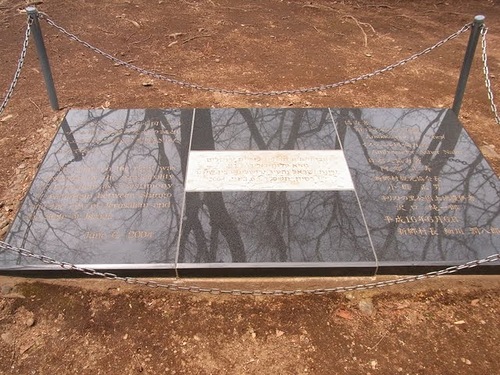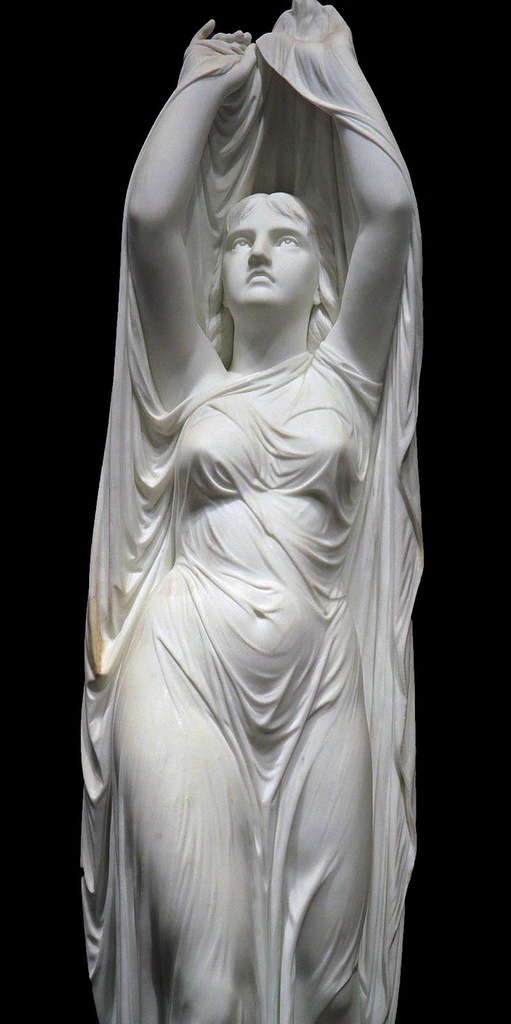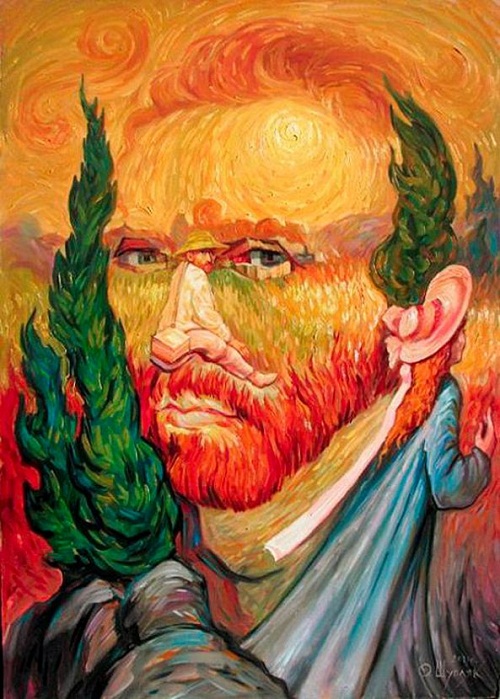Secrets of the miraculous Veil of Veronica
Secrets of the miraculous Veil of Veronica
For many years, there are disputes about the Turin Shroud. But the Shroud is not the only relic, which has a miraculous image of Christ. There are not less than six images which bear a marked resemblance to each other and which are claimed to be the original Veil. The “Veil of Veronica” with the miraculous image of Jesus Christ, according to legend, appeared on the cloth that Veronica offered Christ a towel on which he wiped his face as he carried his cross to Golgotha. There are two “Veils of Veronica” – in St. Peter’s in Vatican and the church in Manopello, for the recognition of the authenticity of one of them is a real war.

Saint Veronica Displaying the Sudarium, Artist Robert Campin. Gallery Stadelsches Kunstinstitut, Frankfurt am Main, Germany
Holy Mandylion. King of Edessa Abgar sent a painter to capture the image of Christ. The image by a court painter appeared supernaturally when Jesus pressed a cloth to his wet face. This image was brought to Edessa emperor, but the relic was stolen during the looting of the city in 1204, and then lost. According to Eastern Orthodoxy, the image of Edessa was “created by God, and not produced by the hands of man”
Second – “Face of Manoppello”, also called the “Veil of Veronica”, but there is no crown of thorns. The Holy Face of these images connects them with other well-known relic – the Turin Shroud:
The mystery of the Turin Shroud has not yet been explained by traditional science; so a great interest in a possible mechanism of image formation still exists. A variety of scientific theories regarding the shroud have since been proposed, based on disciplines ranging from chemistry to biology and medical forensics to optical image analysis. The origins of the shroud and its image are the subject of intense debate among scientists, theologians, historians and researchers. The Catholic Church itself does not officially recognize the shroud genuine, but keeps it and worships. The image on the shroud is commonly associated with Jesus, his crucifixion and burial, and regarded by many Christians as a contact relic of Jesus.
These miraculous images became first icons and gave rise to many images, where the face is represented on the shroud:

Image of the Savior Nerukotvorniy (Made Without Hands): a traditional Orthodox iconography in the interpretation of Simon Ushakov (1658).
Shroud with the Image of the Savior is sometimes held by angels:

Monastery Ossiach – Celling-painting: Painted Dome with Angel with the Veil of Veronica – Painter: Josef Ferdinand Fromiller
According to legend, a certain woman gave Christ a handkerchief as he carried the cross to Calvary, so that he could wipe the sweat and blood on the face from the thorn needle:

Alsace, Bas-Rhin, Strasbourg, Eglise Saint-Pierre-le-Vieux catholique, Choeur, Tableaux “La Passion du Christ” (1485), H.Lutzelmann, Jesus portant la croix
Face of Jesus imprinted on the cloth, here you can see how it manifests itself:

Jacopo Pontormo. Dekoration der Papstkapelle Leo X. in Santa Maria Novella in Florenz. Veronika, Detail. Date 1515
This relic is kept in the Cathedral of St. Peter in Rome. On the cloth against the light the image of the face of Jesus is seen. Just as in the shroud to the picture applied paint of unknown organic materials. Scientists are still examining these images, but the mystery is not solved. Moreover, the Vatican refuses to recognize the authenticity of the stored in a remote monastery of the Italian village Manoppello icon “Veil of Veronica”. The disposal of the Holy See is a private relic claim to be called a veil of St. Veronica. If the veil in Manoppello is true, it means that another veil of Veronica, which is kept in the Cathedral of St. Peter in the Vatican, seen by a few people – is not.
Veronica veils depicted in many paintings and sculptures:
The Roman Catholic Church canonized Saint Veronica, although there is no reliable information about what the story of the veil has actually occurred. At least in the New Testament about the described event is not mentioned. According to the Vatican, Veronica kept the veil for a long time. They say she’s cured with its help the Roman Emperor Tiberius, and then gave it to Pope Clement for storage. And since then, the veil is kept in St. Peter’s in Rome.

Saint Veronica’s Veil. Made in Italy. c. 1500. Bernardino di Bosio Zaganelli, Italian (active Romagna), c. 1470 – c. 1510. Oil on panel
According to official figures of the Vatican Veronica’s veil – the most precious relic of Christianity, is still kept in the Basilica of St. Peter. In 1628, Pope Urban VIII issued a ban on solemn demonstration of the veils to believers. It became almost impossible to see it. Veronica’s veil is removed from the column on public display only once a year – on the fifth Sunday of Lent supper, but the show is short, and in addition, it is demonstrated from the high balcony of the Pillar of Saint Veronica. To approach the relics is only allowed the Canons of the Basilica of St. Peter.

Predella of the altarpiece in Sankt Peters Klosters kyrka in Lund, Skåne, Sweden. Relieve of angels holding Veronica’s veil
Trompley
Images of “tromp l’oeil” were very popular in the 17th century, there is some dresses Veronica in this technique:
Francisco de Zurbaran:
Meticulous German journalist Paul Budd, spring 2004 addressed to Cardinal Francesco Marchisano, general vicar of the Vatican and the Arch-priest of the Basilica of St. Peter, asking to see the relic hidden in the column. He got negative answer, explained by the fact that “over the years, the image is too faded.” Finally, the persistence of the journalist won and Cardinal Francesco Marchisano made an exception for him – he was allowed to enter the store of Vatican, where the Pillar of Veronica is located. He survived the deep disappointment. Linen not only did not make any impression on him, but it can hardly be seen the image, it looked more like a dark spot. Budd suspects that in the early seventeenth century, when there was built a new St. Peter’s Basilica, the Veil was stolen, and in its place, Put a bad copy.
Here depicted the veil like the one that is stored in Monappello:
German Jesuit priest, teacher of the Gregorian University in Rome, Frank Heinrich Pfeiffer came to the conclusion that Monappello veil has unusual, supernatural properties. It is almost transparent, reddish-brown in color, it captures the face of a bearded man, no traces of paint on it. Depending on the inclination of the sun’s rays that image disappears, in the Middle Ages it was considered a miracle. Further, the image is on both sides – both are identical to each other.
Secrets of the miraculous Veil of Veronica remain secrets. It is a mixture of slide and hologram man of Mediterranean appearance with a broken face and a broken nose. Details of such as a thin beard and plucked eyebrows, it looks almost like a photograph or, at least, negative. In the dim light images lose color, printing becomes darker and features Christ look like a dead man. If to rotate the image against the light of day, it disappears, and when he was being watched from the side of the altar, the expression of the eyes on the face changes looks. It is believed that the veil is made of fine linen – very high quality silk yarn obtained from mussels, with which these molluscs attach to the rocks.
Secrets of the miraculous Veil of Veronica. Sculpture and reliefs

Rogier van der Weiden
(b. 1400, Tournai, d. 1464, Bruxelles). Crucifixion Triptych. c. 1445. Oil on oak panel, 101 x 70 cm (central panel), 101 x 35 cm (each wing). Kunsthistorisches Museum, Vienna.

Angels Supporting the Veil of St Veronica. Master of Saint Ursula Legend c 1475-1500. Oil on panel, 62 x 44 cm. Private collection

Sacro Monte di Varallo, Varallo Sesia, Italy – Polychrome clay statues and frescos; Chapel XXXVI, Jesus on the Road to Calvary, statues by Tabacchetti e Giovanni d’Enrico, 1599-1600
marinni.livejournal.com













































